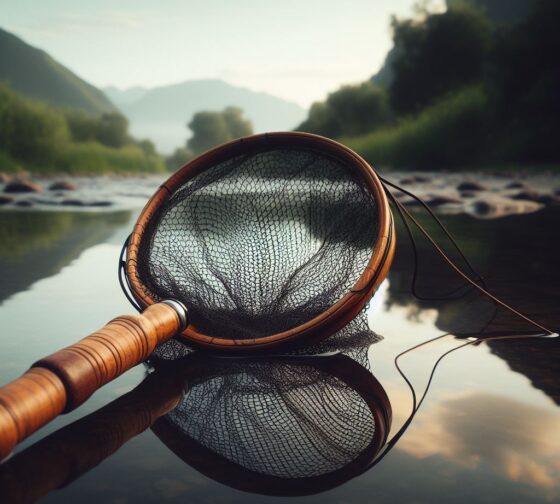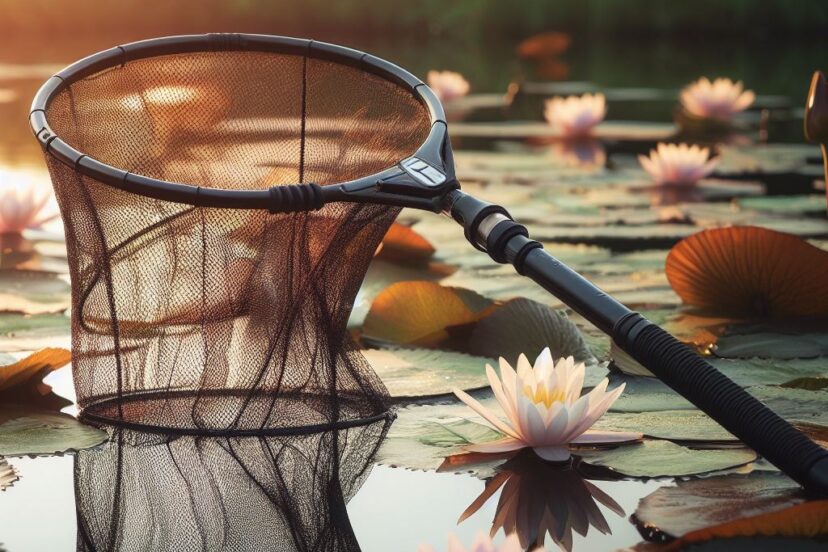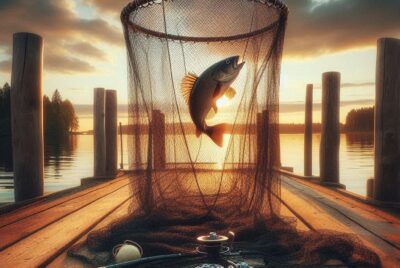Fly Fishing Net Selection: A Comprehensive Guide
*We may earn a commission for purchases made using our links. Please see our disclosure to learn more.
Choosing the Perfect Fly Fishing Net: A Personal Guide
Fly fishing, with its rhythmic casts and tranquil surroundings, is not just a hobby; it’s a way of life. To make the most of this experience, one must consider every piece of equipment, and today, I want to shed light on a crucial yet often overlooked tool: the fly fishing net. As an avid angler myself, I understand the perplexity and burstiness that can come with choosing the right net, and I’m here to help you navigate the world of fly fishing nets.
Understanding Fly Fishing Nets
When it comes to fly fishing nets, it’s not a one-size-fits-all scenario. These nets come in various shapes and sizes, each designed for specific purposes. The choice between rubber, nylon, or rubber-coated mesh can also be perplexing. The material you select can impact your fishing experience, so it’s essential to understand your options.
Size Matters: Selecting the Right Net Size
Size plays a crucial role in net selection. A net that’s too small can be impractical, while one that’s too large may not be suitable for your fishing environment. To make the right choice, consider the type of fish you intend to catch and the location where you’ll be fishing.
The Art of Knotless Nets
Knotless nets have gained popularity in recent years, especially for catch and release. These nets are designed to minimize harm to the fish, making them a responsible choice for conservation-minded anglers.
Handle and Grip Considerations
The handle and grip of your net should not be underestimated. Whether it’s a wooden handle for classic aesthetics or a rubber grip for comfort and control, your choice affects your experience on the water.
Mesh Types for Fly Fishing Nets
The type of mesh used in your net also matters. Rubber, nylon, and rubber-coated mesh each have their pros and cons. The right mesh can help you land your catch safely and efficiently.
Why Rubber Nets Are a Wise Choice
For eco-conscious anglers, rubber nets are an excellent option. Not only are they environmentally friendly, but they’re also gentle on fish scales and are easy to clean and maintain.
Traditional vs. Modern Designs

Tradition and modernity meet in the world of fly fishing nets. Traditional wooden nets evoke nostalgia and elegance, while modern designs are lightweight and functional. Your choice reflects your personal style and preferences.
Maintaining Your Fly Fishing Net
Proper maintenance is essential to keep your fly fishing net in pristine condition. Regular cleaning and inspection can extend its lifespan and ensure it remains a reliable tool in your fishing adventures.
Fly Fishing Net: Eco-Friendly Options
The importance of choosing eco-friendly materials in your fly fishing net cannot be overstated. As stewards of our environment, anglers should aim to reduce their impact. Look for nets made from sustainable materials and support brands committed to environmental responsibility.
Tips for Beginners
For beginners in the world of fly fishing, selecting the right net can be a daunting task. Start with a net that suits your intended fishing environment and be mindful of common mistakes, such as choosing a net that’s too large for your needs.
Matching the Net to the Environment
The fishing environment significantly influences your net selection. Freshwater and saltwater fly fishing require different considerations. Ensure you have the right net to tackle the challenges of your chosen fishing grounds.
The Joy of Landing a Catch
There’s a special joy in skillfully using the right net to land a fish. It’s not just about the catch; it’s about the satisfaction of knowing you made the right choice in equipment. Every angler has their own story of a triumphant net-assisted catch, and I encourage you to create your own.
Fly Fishing Net: Conclusion
In the world of fly fishing, your net is not just a tool; it’s an extension of your passion. Selecting the perfect fly fishing net may be perplexing, but it’s an essential choice that can enhance your angling experience. So, take your time, explore your options, and make a choice that resonates with your style and values. Happy fishing!
FAQs
- What is the most suitable net size for catch and release fly fishing?
- The ideal net size for catch and release fly fishing depends on the fish species you’re targeting. In general, opt for a net with a deep bag and moderate size to ensure fish safety and ease of release.
- How do I clean and maintain a rubber mesh fly fishing net?
- To clean a rubber mesh net, rinse it with freshwater after use, and occasionally wash it with a mild detergent. Check for any signs of damage or wear and tear regularly.
- Are wooden handle fly fishing nets durable?
- Wooden handle nets can be durable, but they require proper maintenance to prevent warping or cracking. Keeping the handle dry and occasionally treating it with linseed oil can extend its lifespan.
- What should a beginner angler look for in their first fly fishing net?
- Beginners should prioritize net size that matches the fish they plan to catch and the fishing environment. Knotless, rubber, or rubber-coated mesh is a safe choice, and a comfortable grip is important for control.
- Can I use the same fly fishing net for both freshwater and saltwater fishing?
- It’s possible to use the same net for both types of fishing, but it’s essential to thoroughly rinse and clean the net after saltwater use to prevent corrosion. Consider getting a designated net for saltwater if possible.




